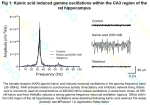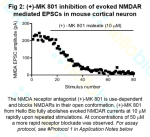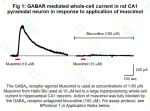Pharmacological disease models
Small molecules and excitotoxic agents can be used to pharmacologically induce disease models such as epilepsy, Parkinson's Disease, catalepsy, Schizophrenia, pain and diabetes models. Researchers can save up to 50% on excitotoxic agents - they are up to half the price of other suppliers.
Haloperidol hydrochloride (HB1842)
Description:Dopamine receptor antagonist with partial D2-like selectivity
Purity:>99%
Kainic acid (HB0355)
Description:Prototypic, selective kainate receptor agonist. Potent excitant and neurotoxin.
Purity:>98%
(+)-MK 801 maleate (HB0004)
Description:Potent, selective, non-competitive NMDA receptor antagonist
Purity:>98%
MOG (35-55) (HB5273)
Description:Myelin oligodendrocyte glycoprotein fragment. Induces experimental multiple sclerosis-like disease.
Purity:>95%
MPEP hydrochloride (HB0426)
Description:Potent, selective mGluR5 antagonist / mGluR4 positive allosteric modulator
Purity:>98%
Pexidartinib (PLX3397) (HB8991)
Description:Potent CSF-1R inhibitor. Widely used microglia-depletion agent.
Purity:>98%
PLX5622 (HB17582)
Description:Highly selective, potent CSF-1R inhibitor. Widely used microglia-depletion agent.
Purity:>98%












